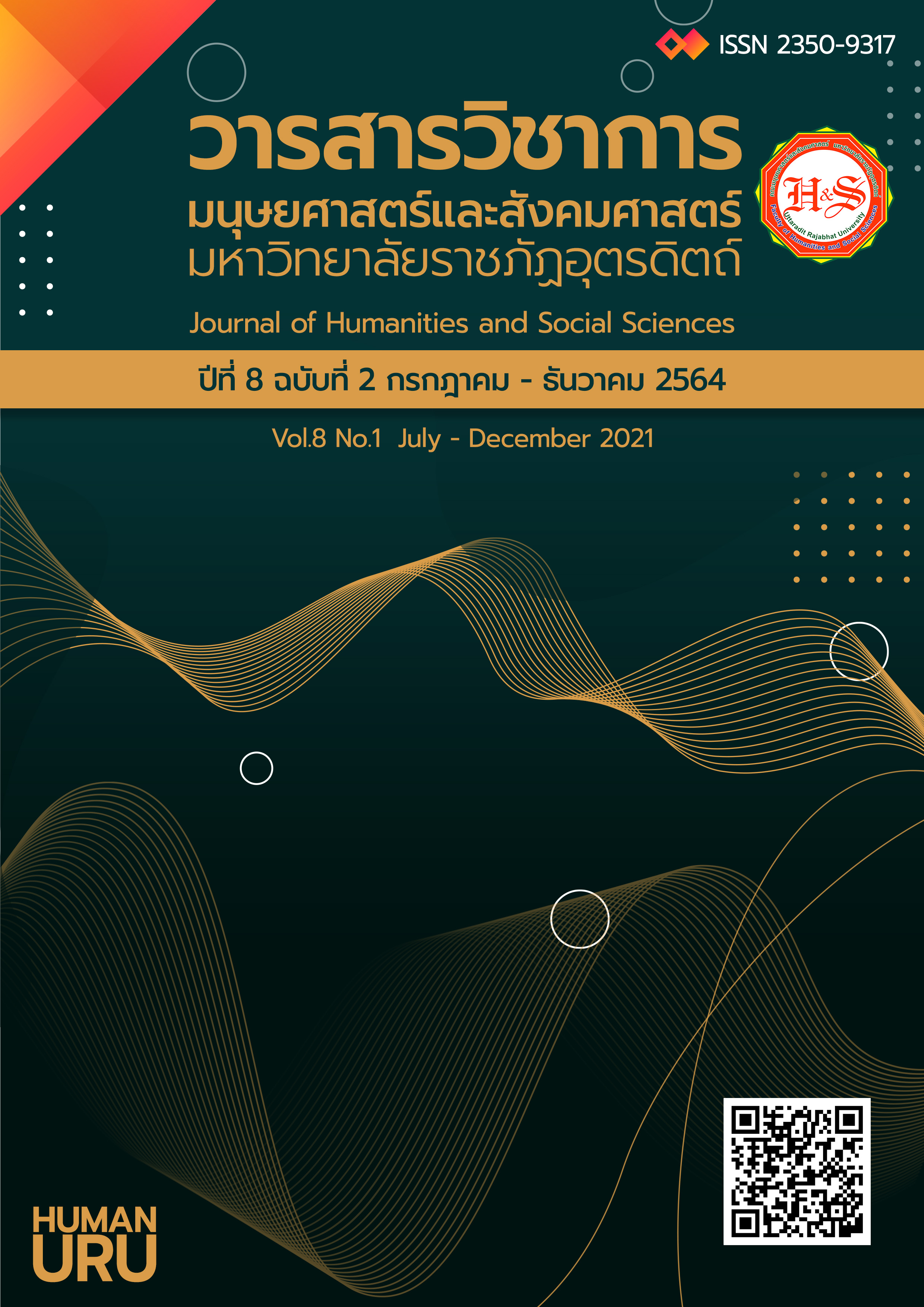The Development of Quality of Life Promoting Model for the Elderly Using Local Traditional Dance
Keywords:
Promoting for Quality of Life, Elderly, Local Traditional DanceAbstract
The development of quality of life promoting model for the elderly using local traditional dance was a participatory action research using mixed research methods in order to develop a model to promote the quality of life for the elderly with local traditional dance activities. The 43 participants were the members of the Plai Chumpol Senior School, Phlai Chumphon Subdistrict, Mueang District, Phitsanulok Province. The research used in-depth interviews, group conversation and qualitative analysis for the development of local traditional dance styles and used questionnaires and basic data analysis to examine the quality of life of the elderly.
The research showed the background and history of local traditional dance in Ban Phlai Chumphon that has developed from choreography and folk dance songs about 100 years ago. Until now, the little remain of the songs and choreography of these folk dance songs were found. Later, a music band was established in the village, with two drums, cymbals, simple cymbals, until the development and inheritance until today. This local traditional dance form developed for exercise in the elderly. It was the introduction of folk dance music popular country songs, including dance moves and choreography that still appear in the area, It was assembled into exercise set which was divided into 3 exercise sessions which were 1) Warm up period Consisting of the songs and dances of the music, walking around, dancing and pleang puang malai 2) Exercise period consisting of Thai country music and rhythmic dance moves and 3) The relaxation period consisted of songs and dance moves of folk dance music. For the research on the quality of life of the elderly, it was found that most participants were female and had the quality of life according to the quality of life indicators of the World Health Organization (WHOQOL-BREF-THAI) at a good level and the quality of life was not different before and after the local traditional dance activities because the elderly had a healthy body that was healthy and feels independent without having to rely on others. Moreover, they had the energy to be able to move the body that can perform various activities by oneself as well. In addition, it was found that the research results also cause psychosocial well-being Psychologically and emotions can result in stress relaxation, fun, happy, enjoy music in terms of society, resulting in meeting with a variety of people that created more integration and socialization.
References
จักรกริช กล้าผจญ. (2553). ดนตรีบำบัด: ภาพรวมและการนำไปใช้กับโรคและความผิดปกติทางระบบประสาท. เข้าถึงได้จากhttp://www.med.cmu.ac.th/dept/rehab/2010/images/.../
neurologic_music_thera- py. (วันที่สืบค้น 15 มีนาคม 2562).
ดวงจิตต์ นะนักวัฒน์. (2550).ปัจจัยที่มีความสัมพันธ์ต่อการดูแลตนเองของผู้สูงอายุ กรณีศึกษา ตำบลม่วงคำ อำเภอพาน จังหวัดเชียงราย. สถาบันบัณฑิตพัฒนบริหารศาสตร์:กรุงเทพฯ.
ภูริชญา เทพศิริ. (2555). คุณภาพชีวิตของผู้สูงอายุในตำบลทองหลาง อำเภอบ้านนา จังหวัดนครนายก.หลักสูตรรัฐประศาสนศาสตรมหาบัณฑิตคณะศิลปศาสตร์ มหาวิทยาลัยเกริก;กรุงเทพฯ.
เทศบาลตำบลพลายชุมพล. (2559). เทศบาลพลายชุมพลสภาพทั่วไปและข้อมูลพื้นฐาน. เข้าถึงได้จากhttp://www. พลายชุมพล. com/index.php?mod=blog&path=web/blog&id_sub_menu=37&namemenu. (วันที่สืบค้น 14 กันยายน 2560).
มูลนิธิสถาบันวิจัยและพัฒนาผู้สูงอายุไทย. (2558). รายงานสถานการณ์ผู้สูงอายุไทยประจำปี 2558. กรุงเทพมหานคร: บริษัทอมรินทร์พริ้นติ้งแอนด์พับลิชชิ่ง จำกัด (มหาชน).
ระพีพรรณ ขาวเรือง. (2550). บทบาทของดนตรีบำบัดที่มีต่อจิตบำบัด. สารนิพนธ์ระดับบัณฑิตศึกษา วิทยาลัยศาสนศึกษา มหาวิทยาลัยมหิดล.
วิภานันท์ ม่วงสกุล. (2558). การพัฒนาศักยภาพผู้สูงอายุที่อาศัยอยู่ตามลำพังด้วยแนวคิดพฤฒพลัง. วารสารวิจัยสังคม, 38(2),93-112.
ศุภกิจ ศิริลักษณ์. (2557). เอกสารนำเสนอประกอบการประชุมวิชาการวิจัยระบบสุขภาพ ครั้งที่ 3 ประจำปี 2557 “วิจัย...เปลี่ยนชีวิต” วันที่ 4-5 กันยายน 2557 ณ อิมแพคฟอรัมเมืองทองธานี.
สำนักงานสาธารณสุขจังหวัดพิษณุโลก. (2559). รายงานประจำปี 2559. สำนักงานสาธารณสุขจังหวัดพิษณุโลก. พิษณุโลก.
สถาบันเวชศาสตร์ผู้สูงอายุ กรมการแพทย์. (2549). สถานการณ์ผู้สูงอายุไทย พ.ศ. 2551. มูลนิธิสถาบันวิจัยและพัฒนาผู้สูงอายุไทย (มส.ผส.). กรุงเทพฯ.
World Health Organization. (1996). WHOQOL BREF introduction, administration, scoring and generic version of the assessment. Retrieved January 20, 2018,
from https://www.who.int/mental_health/media/en/76.pdf.
Mendoza-Ruvalcaba, N., & Arias-Merino, E. D. (2015). “I am active”: Effects of a program to promote active aging. Clinical Interventions in Aging, 10, 829-837. doi:10.2147/cia.s79511
United Nations. (2015). World Population Prospects: The 2015 Revision, Key Findings and Advance. New York: Department of Economic and Social Affairs.
World Health Organization. (2002). Active ageing: A policy framework.
Downloads
Published
Versions
- 2022-02-15 (4)
- 2022-02-15 (3)
- 2022-01-25 (2)
- 2021-12-30 (1)
How to Cite
Issue
Section
License
Copyright (c) 2021 Journal of Humanities and Social Sciences Uttaradit Rajabhat University

This work is licensed under a Creative Commons Attribution-NonCommercial-NoDerivatives 4.0 International License.
บทความเป็นลิขสิทธิของคณะมส. มรภ อต.



